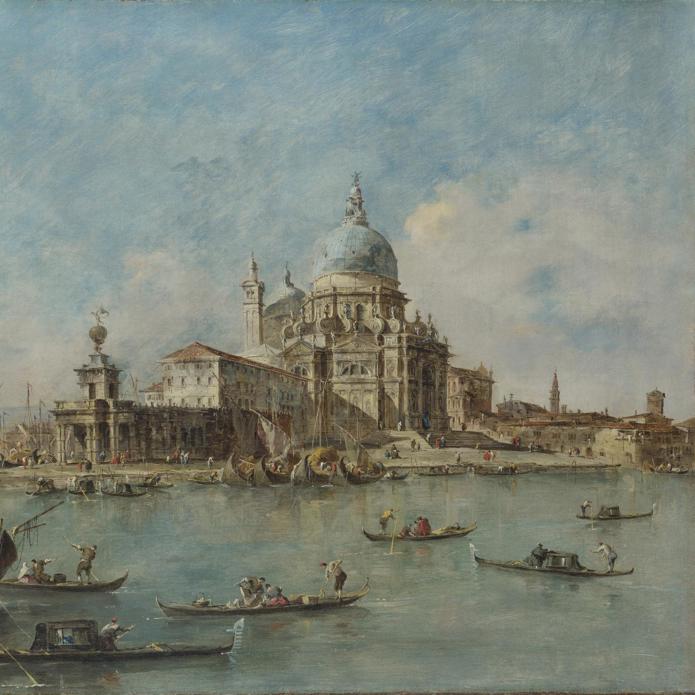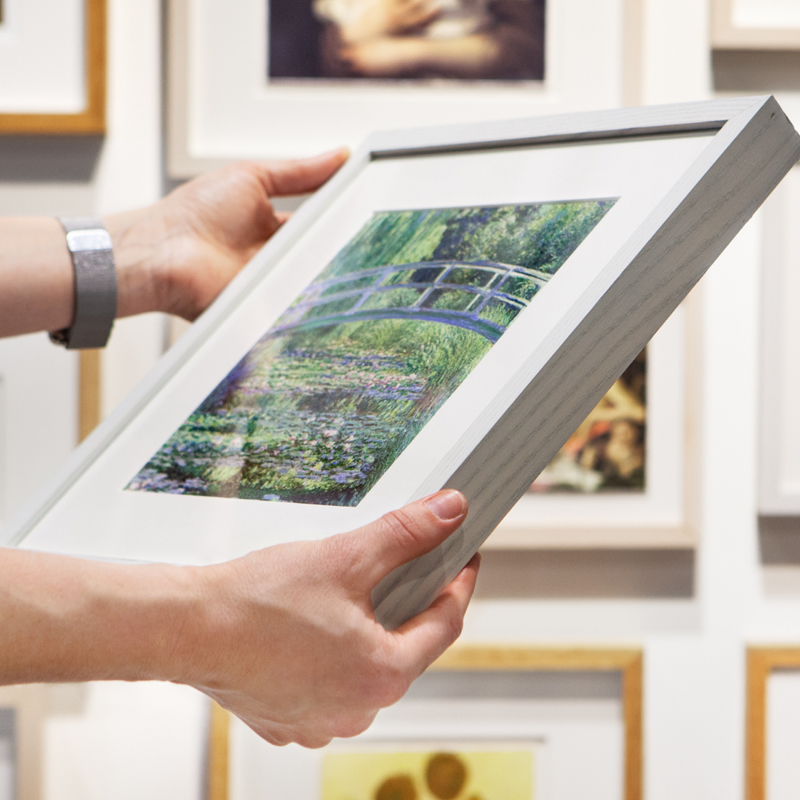Francesco Guardi, 'Venice: The Punta della Dogana', about 1770
About the work
Overview
The huge dome of the church of S. Maria della Salute dominates the entrance of the Grand Canal. Just in front is the Dogana da Mar (Customs House), built in the 1670s and shaped like a ship’s bow. Above its entrance is a weathervane in the form of Fortune, a personification of the Venetian Republic’s supremacy over the Adriatic Sea.
The water is a hive of activity: large boats carrying cargo sail beside a flurry of smaller vessels. On the shore, merchants remove goods from their boats and secure passage into the Grand Canal. A little way along the quay, locals walk towards the church.
The scene is full of light as well as movement: the sky is luminous and sunlight flickers on the water. Guardi has used a variety of tones and colours to create the rippling, reflective surface of water.
Key facts
Details
- Full title
- Venice: The Punta della Dogana with S. Maria della Salute
- Artist
- Francesco Guardi
- Artist dates
- 1712 - 1793
- Part of the series
- Two Views of Venice
- Date made
- about 1770
- Medium and support
- oil on canvas
- Dimensions
- 56.2 × 75.9 cm
- Acquisition credit
- Bequeathed by the Misses Cohen as part of the John Samuel Collection, 1906
- Inventory number
- NG2098
- Location
- Not on display
- Collection
- Main Collection
Provenance
Additional information
Text extracted from the ‘Provenance’ section of the catalogue entry in Michael Levey, ‘National Gallery Catalogues: The Seventeenth and Eighteenth Century Italian Schools’, London 1986; for further information, see the full catalogue entry.
Exhibition history
-
2013Drawn to the light - Kyffin Williams and VeniceOriel Ynys Môn20 July 2013 - 2 February 2014
Bibliography
-
1956Levey, Michael, National Gallery Catalogues: The Eighteenth Century Italian Schools, London 1956
-
1986Levey, Michael, National Gallery Catalogues: The Seventeenth and Eighteenth Century Italian Schools, London 1986
-
2001
C. Baker and T. Henry, The National Gallery: Complete Illustrated Catalogue, London 2001
About this record
If you know more about this painting or have spotted an error, please contact us. Please note that exhibition histories are listed from 2009 onwards. Bibliographies may not be complete; more comprehensive information is available in the National Gallery Library.
Images
About the series: Two Views of Venice

Overview
Venice: The Doge’s Palace and the Molo from the Basin of San Marco and its companion picture Venice: The Punta della Dogana with S. Maria della Salute were intended to be hung together. Paintings like these were a reminder of Venice’s impressive architecture and bustling atmosphere, and fulfilled a taste for poetic views of the city among locals and foreign collectors.
Guardi shows Venice here as a prosperous city, although by the second half of the eighteenth century the Venetian Republic’s control of the Mediterranean sea trade was growing weaker. For centuries its maritime power had been unrivalled, its economic growth achieved by receiving goods from the east by sea and selling them in the growing European market.
By the 1770s, when these paintings were probably made, Guardi had moved away from the influence of the famed Venetian artist Canaletto in terms of technique. He continued to paint similar parts of the city, but with a more free-handed approach and a particular interest in atmospheric effects.
























